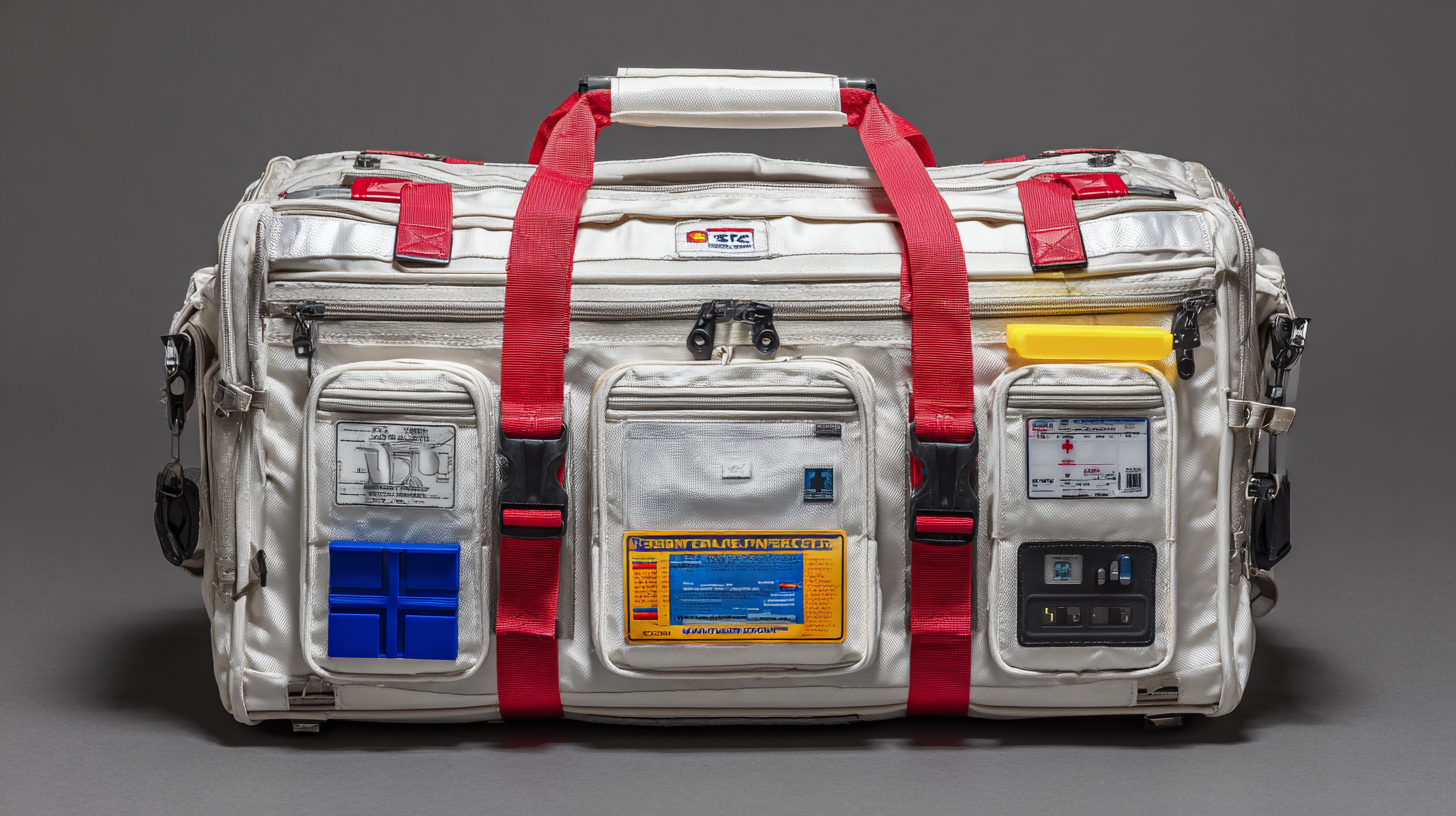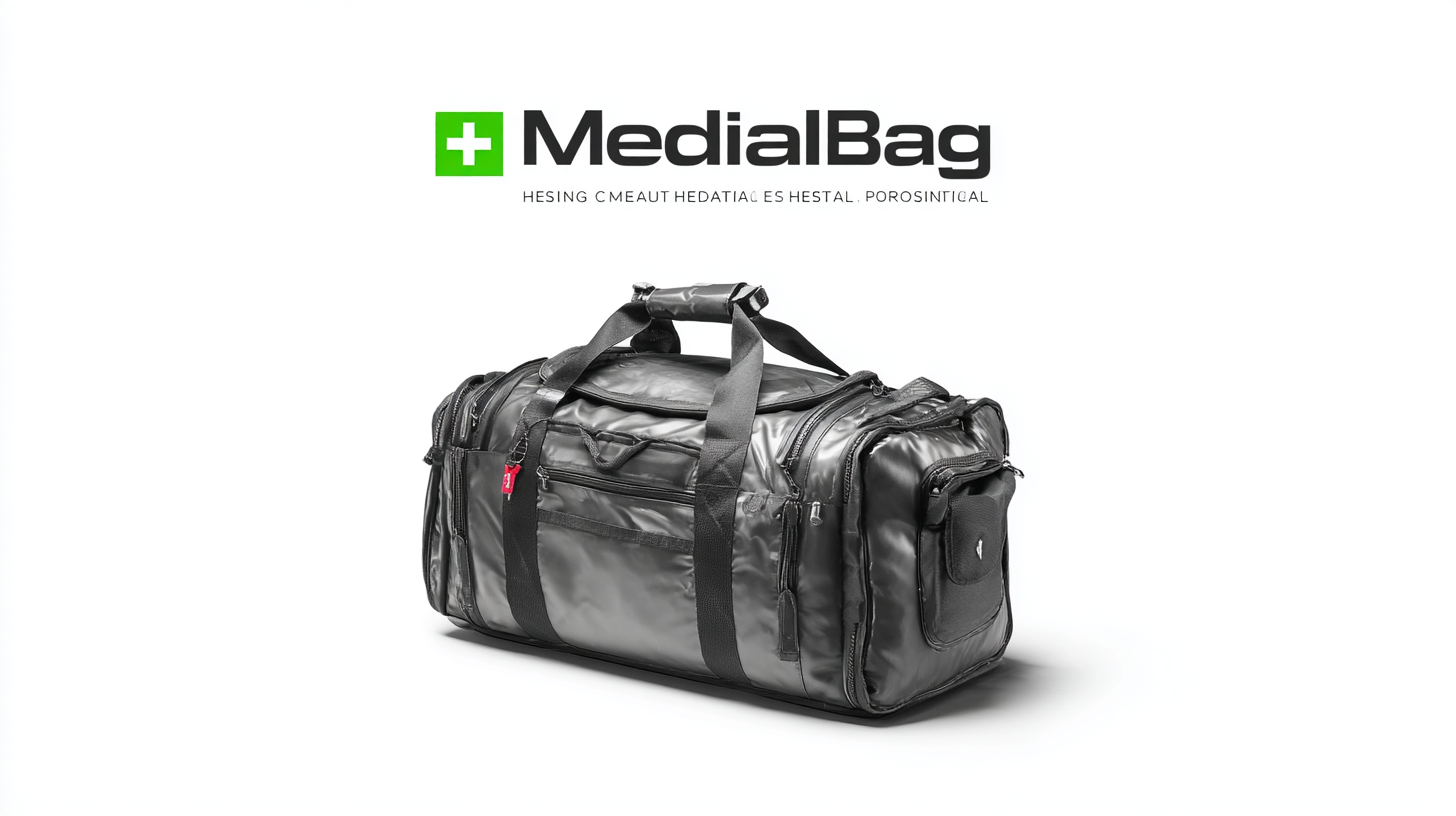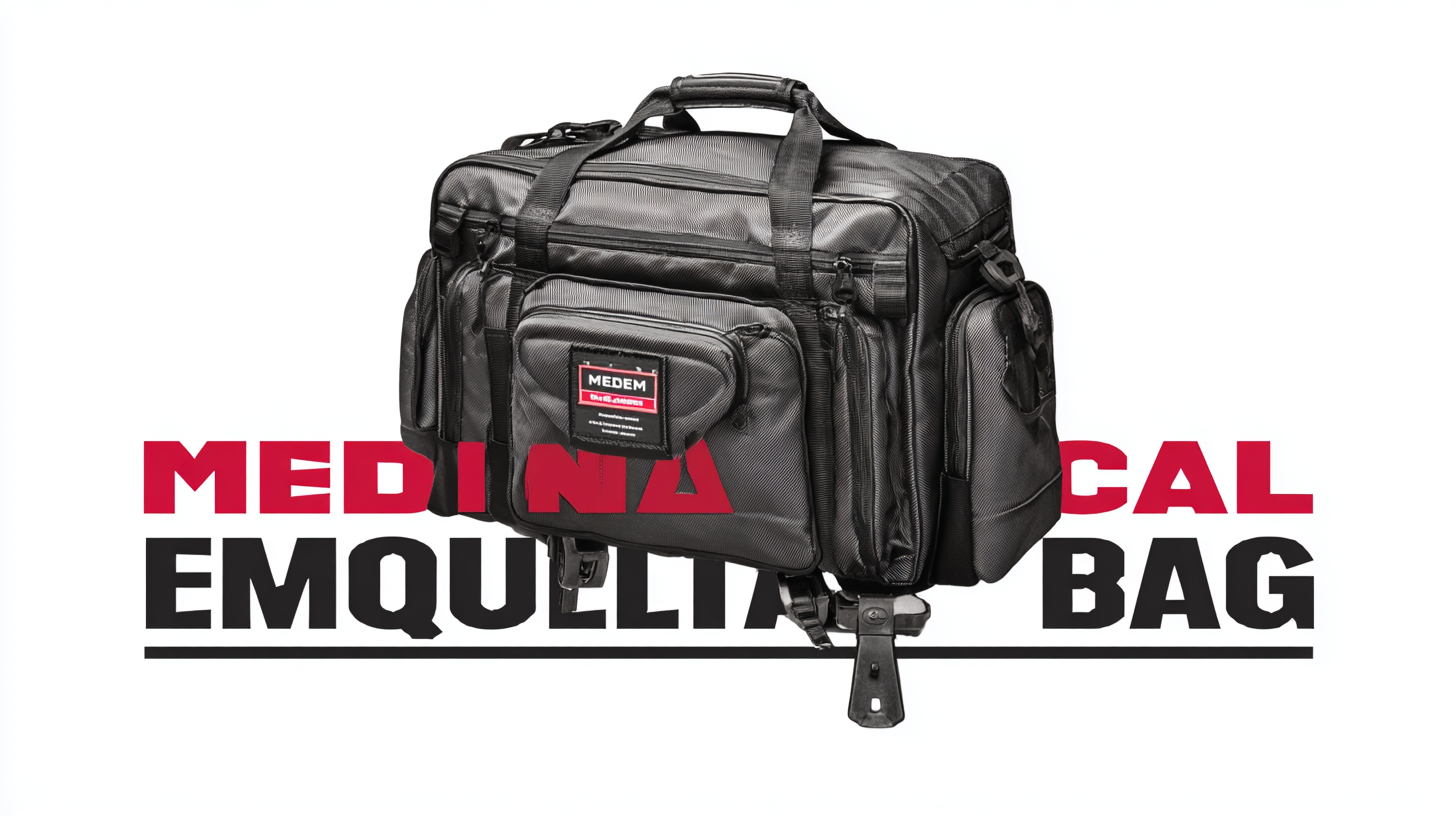- 0086-0769-87986375
- Welcome you to Dongguan Yili Bags Co., Ltd. website!
7 Essential Tips for Choosing the Best Medical Equipment Bag for Healthcare Professionals
In the fast-paced environment of healthcare, the importance of having reliable and efficient tools at hand cannot be overstated. One critical component that healthcare professionals depend on is the Medical Equipment Bag. According to a recent report by Research and Markets, the global market for medical bags is projected to reach over $1.2 billion by 2025, driven by the increasing demand for portable medical equipment and the rising prevalence of chronic diseases.

With a variety of options available, choosing the right Medical Equipment Bag can significantly impact not only the functionality of healthcare providers but also the quality of care delivered to patients. This blog aims to equip healthcare professionals with seven essential tips for selecting the best Medical Equipment Bag tailored to their specific needs and ensuring optimal performance in their daily tasks.
Understanding the Unique Needs of Healthcare Professionals in Equipment Bags
In the fast-paced environment of healthcare, professionals rely on equipment bags that cater to their specific needs. According to a report by MarketsandMarkets, the global medical equipment market is projected to reach USD 659.8 billion by 2025, indicating a growing demand for efficient and practical carrying solutions. Understanding the unique requirements of healthcare practitioners, such as portability, organization, and durability, is crucial when selecting the best medical equipment bag.
One essential tip for choosing an equipment bag is to prioritize functionality. Healthcare professionals often need to carry various tools and supplies, so bags with multiple compartments and easy access are invaluable. Look for bags that offer adjustable dividers, enabling users to customize their storage solutions. Additionally, consider the weight and materials used in the bag. Lightweight yet durable fabrics, such as nylon or polyester, not only enhance mobility but also ensure longevity, as highlighted in a study by the Journal of Healthcare Engineering.
Another important aspect is the bag's ergonomic design. Healthcare workers are on their feet for extended periods, making comfort essential. Bags with padded shoulder straps and back support can significantly reduce the risk of strain or injury. Research indicates that 60% of healthcare professionals experience work-related musculoskeletal disorders; thus, investing in a well-designed bag can contribute to overall well-being in this demanding field.

Key Features to Look for in a Medical Equipment Bag
When choosing the best medical equipment bag for healthcare professionals, several key features are essential to consider. First and foremost, durability is paramount. A bag made from high-quality, water-resistant materials will not only withstand the rigors of daily use but also protect valuable medical tools from environmental elements. Reinforced stitching and heavy-duty zippers add to the longevity of the bag, ensuring that it remains reliable over time.
Another crucial feature is organization. A well-designed medical equipment bag should have multiple compartments and pockets that allow healthcare professionals to categorize their tools efficiently. Look for bags with adjustable dividers and elastic loops, which help keep instruments secure and accessible. Additionally, consider the size and weight of the bag; it should be lightweight enough to carry comfortably while still offering ample storage space for essential gear. Finally, special features such as reflective strips for visibility and easy-to-clean materials can enhance safety and convenience, making the bag a practical choice for any healthcare environment.
Material Selection: Durability and Functionality in Medical Bags
When selecting a medical equipment bag, the choice of materials plays a critical role in ensuring both durability and functionality. According to the U.S. Bureau of Labor Statistics, the healthcare industry experiences a turnover rate of over 20%, emphasizing the need for reliable gear that can withstand rigorous daily use. A well-constructed medical bag should feature materials like nylon or polyester, which offer high resistance to tears and abrasions. A 2022 market report by Grand View Research indicated that nylon bags, in particular, have gained popularity due to their lightweight nature and water-resistant properties, making them ideal for healthcare settings.
Furthermore, it is essential to consider antimicrobial materials when selecting a medical bag. A study published in the Journal of Hospital Infection found that antimicrobial fabrics can reduce the risk of cross-contamination by up to 70% in clinical environments. Choosing bags made from such materials not only enhances safety but also prolongs the overall lifespan of the bag, making it a worthwhile investment for healthcare professionals. By prioritizing durability and functionality through material selection, medical practitioners can ensure their equipment remains protected, organized, and easily accessible during critical moments.
Durability and Functionality Rating of Medical Equipment Bags
Design Considerations for Improved Accessibility and Organization
When selecting medical equipment bags, design considerations play a crucial role in enhancing accessibility and organization for healthcare professionals. A report by the Journal of Healthcare Engineering (2021) indicates that effective organizational systems within medical bags can reduce the time spent retrieving equipment by up to 30%. Therefore, it is vital to choose bags with multiple compartments and pockets that allow for efficient categorization of tools and supplies. Features such as color-coded sections or labeled pockets can significantly improve response times in emergency situations.
Moreover, the accessibility of a medical equipment bag can greatly affect a healthcare professional's workflow. According to a study conducted by the American Association of Critical-Care Nurses (AACC), the ease of access to medical tools directly correlates with a reduction in stress levels among staff, which can ultimately improve patient outcomes. Bags designed with easy-open zippers, padded straps for comfort, and lightweight materials contribute to quick access without causing unnecessary strain. By prioritizing these design elements, healthcare professionals can ensure that their medical equipment bags not only meet their practical needs but also support their overall efficiency and well-being in the demanding healthcare environment.
Budgeting for Quality: Investing in Long-Lasting Medical Equipment Bags
Choosing the right medical equipment bag is crucial for healthcare professionals, not just in terms of functionality but also in terms of budget. As the global enema bag market is projected to grow from USD 1963.63 million in 2025 to USD 2706.8 million by 2033, with a compound annual growth rate of 4.1%, it's clear that the demand for high-quality medical equipment is on the rise. Investing in durable and reliable equipment bags can significantly contribute to the efficiency and effectiveness of healthcare delivery.

A quality medical equipment bag should be seen as an investment rather than a mere expense. The increased advancements in manufacturing, such as Oliver Healthcare Packaging's new state-of-the-art facility in Johor, highlight the importance of catering to the evolving needs of the medical sector in the Asia-Pacific region. By budgeting for quality, healthcare professionals can ensure that they are equipped with bags that can withstand rigorous use, ultimately enhancing patient care and supporting a more efficient workflow.
